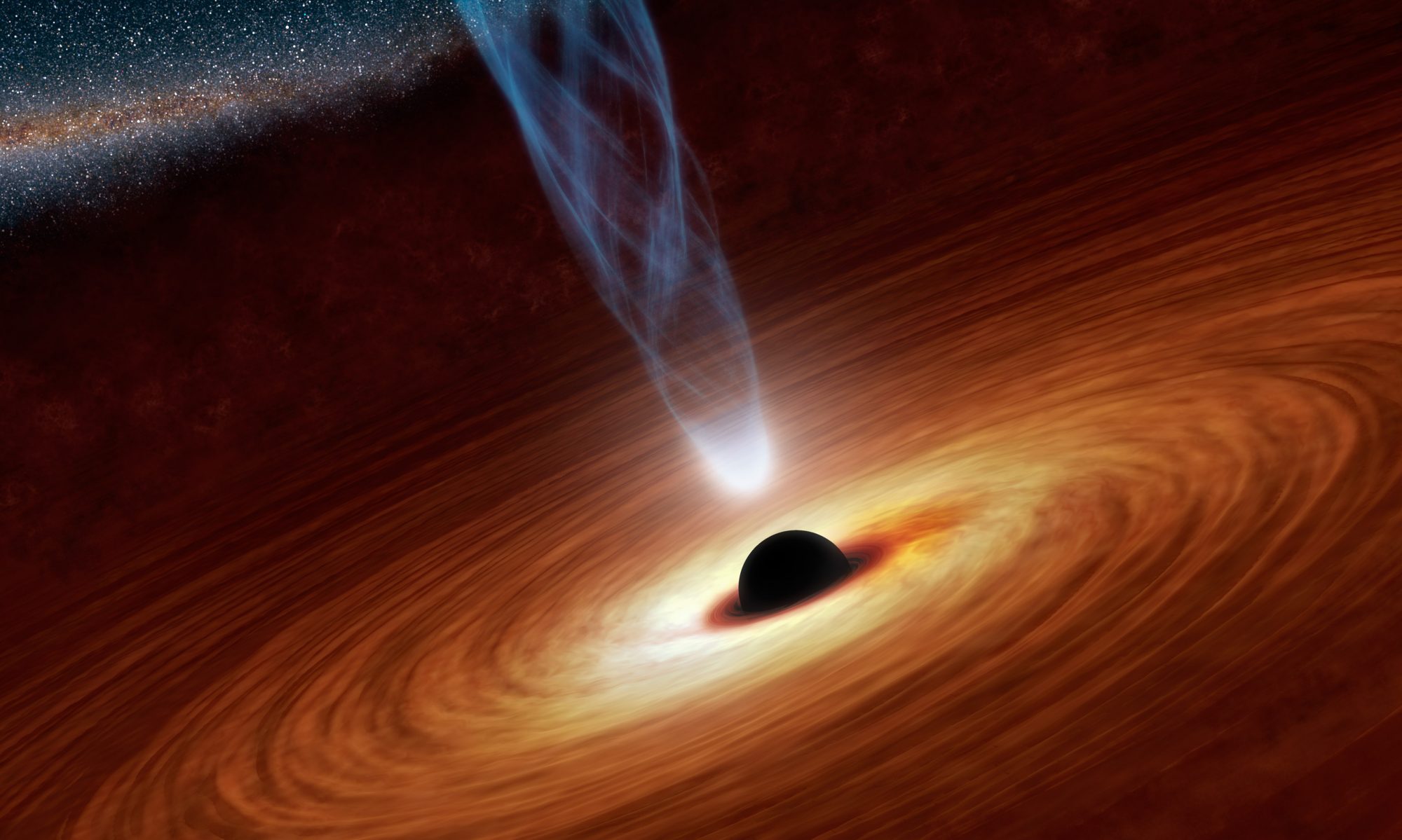![]() The Legacy Survey of Space and Time uses a dedicated 8.4m telescope and state-of-the-art 3.2-gigapixel camera. Named the highest priority for ground-based astronomy in the 2010 Decadal Survey, LSST will produce an animated, 3D cosmic map with unprecedented depth and detail, opening a new way to study the universe. We develop novel data analysis tools for the LSST. We use LSST to study the origin, growth, and ecology of supermassive and intermediate mass black holes.
The Legacy Survey of Space and Time uses a dedicated 8.4m telescope and state-of-the-art 3.2-gigapixel camera. Named the highest priority for ground-based astronomy in the 2010 Decadal Survey, LSST will produce an animated, 3D cosmic map with unprecedented depth and detail, opening a new way to study the universe. We develop novel data analysis tools for the LSST. We use LSST to study the origin, growth, and ecology of supermassive and intermediate mass black holes.
 Scheduled to launch in 2027, the Roman Space Telescope is a NASA observatory designed to settle essential questions in the areas of dark energy, exoplanets, and infrared astrophysics. The Wide Field Instrument will have a field of view that is 100 times greater than the Hubble infrared instrument, capturing more of the sky with less observing time. As the primary instrument, the Wide Field Instrument will measure light from a billion galaxies over the course of the mission lifetime. The Roman Space Telescope will have a primary mission lifetime of 5 years, with a potential 5 year extended mission. We will use Roman to discover galactic-scale dual massive black holes across cosmic time and massive black hole binaries as LISA precursors.
Scheduled to launch in 2027, the Roman Space Telescope is a NASA observatory designed to settle essential questions in the areas of dark energy, exoplanets, and infrared astrophysics. The Wide Field Instrument will have a field of view that is 100 times greater than the Hubble infrared instrument, capturing more of the sky with less observing time. As the primary instrument, the Wide Field Instrument will measure light from a billion galaxies over the course of the mission lifetime. The Roman Space Telescope will have a primary mission lifetime of 5 years, with a potential 5 year extended mission. We will use Roman to discover galactic-scale dual massive black holes across cosmic time and massive black hole binaries as LISA precursors.
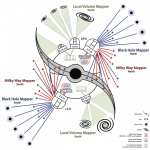 SDSS-V is conducting the first all-sky, time-domain spectroscopic survey. Starting from 2021, the SDSS-V survey has been performing optical and near-infrared, multi-epoch spectroscopy for Milky Way stars and distant supermassive black holes, as well as integral field spectroscopy of the Milky Way and nearby galaxies. We use SDSS-V to discover binary supermassive black holes by monitoring radial velocities of the secondary relative to the primary – in analogy to radial velocity searches for exoplanets.
SDSS-V is conducting the first all-sky, time-domain spectroscopic survey. Starting from 2021, the SDSS-V survey has been performing optical and near-infrared, multi-epoch spectroscopy for Milky Way stars and distant supermassive black holes, as well as integral field spectroscopy of the Milky Way and nearby galaxies. We use SDSS-V to discover binary supermassive black holes by monitoring radial velocities of the secondary relative to the primary – in analogy to radial velocity searches for exoplanets.
![]() The Subaru PFS Survey will investigate the distribution of dark matter by measuring the kinematics of one million stars, perform a cosmological survey over 1400 deg2 to measure the expansion rate of the universe and density of the dark energy, and observe a million galaxies to create a census of early galaxies up to the epoch of star and galaxy formation. We use PFS to study galaxy and black hole formation and evolution in the early universe.
The Subaru PFS Survey will investigate the distribution of dark matter by measuring the kinematics of one million stars, perform a cosmological survey over 1400 deg2 to measure the expansion rate of the universe and density of the dark energy, and observe a million galaxies to create a census of early galaxies up to the epoch of star and galaxy formation. We use PFS to study galaxy and black hole formation and evolution in the early universe.
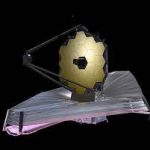 The James Webb Space Telescope complements and extends the discoveries of Hubble, with longer wavelength coverage and greatly improved sensitivity. JWST looks much closer to the beginning of time and hunt for the unobserved formation of the first galaxies, as well as look inside dust clouds where stars and planetary systems are forming today. We use JWST to peek into merging supermassive black holes at much earlier cosmic epochs than ever seen before, and particularly in the “cosmic noon” — peak epoch for star formation and supermassive black hole growth.
The James Webb Space Telescope complements and extends the discoveries of Hubble, with longer wavelength coverage and greatly improved sensitivity. JWST looks much closer to the beginning of time and hunt for the unobserved formation of the first galaxies, as well as look inside dust clouds where stars and planetary systems are forming today. We use JWST to peek into merging supermassive black holes at much earlier cosmic epochs than ever seen before, and particularly in the “cosmic noon” — peak epoch for star formation and supermassive black hole growth.
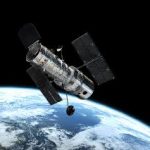 The Hubble Space Telescope has changed our fundamental view and understanding of the universe. We use Hubble to study the host galaxies of supermassive black holes. Hubble’s high resolution allows us to discover close dual supermassive black holes via their smoking-gun effects on the host galaxies, such as the dynamic duo in the close quasar pair in the disk-disk galaxy merger SDSS J0749 + 2255 at z=2.17.
The Hubble Space Telescope has changed our fundamental view and understanding of the universe. We use Hubble to study the host galaxies of supermassive black holes. Hubble’s high resolution allows us to discover close dual supermassive black holes via their smoking-gun effects on the host galaxies, such as the dynamic duo in the close quasar pair in the disk-disk galaxy merger SDSS J0749 + 2255 at z=2.17.
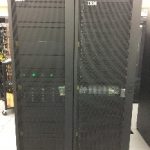 We leverage supercomputing resources available at the NCSA, such as the Hardware-Accelerated Learning cluster at the Innovative Systems Lab. HAL is a 16-node IBM POWER9 cluster with NVIDIA V100 GPUs. We also work with undergraduate students across the Illinois campus on computationally intensive projects through NCSA’s Students Pushing Innovation program.
We leverage supercomputing resources available at the NCSA, such as the Hardware-Accelerated Learning cluster at the Innovative Systems Lab. HAL is a 16-node IBM POWER9 cluster with NVIDIA V100 GPUs. We also work with undergraduate students across the Illinois campus on computationally intensive projects through NCSA’s Students Pushing Innovation program.
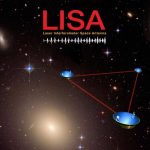 Laser Interferometer Space Antenna will be the first dedicated space-based gravitational wave experiment. LISA will discover parts of the universe that are otherwise invisible, including black holes, the Big Bang, and other, as yet unknown, objects. It will revolutionize our knowledge about the universe. We will use LISA to study intermediate mass black holes in the early universe and the origin and growth of supermassive black holes.
Laser Interferometer Space Antenna will be the first dedicated space-based gravitational wave experiment. LISA will discover parts of the universe that are otherwise invisible, including black holes, the Big Bang, and other, as yet unknown, objects. It will revolutionize our knowledge about the universe. We will use LISA to study intermediate mass black holes in the early universe and the origin and growth of supermassive black holes.
